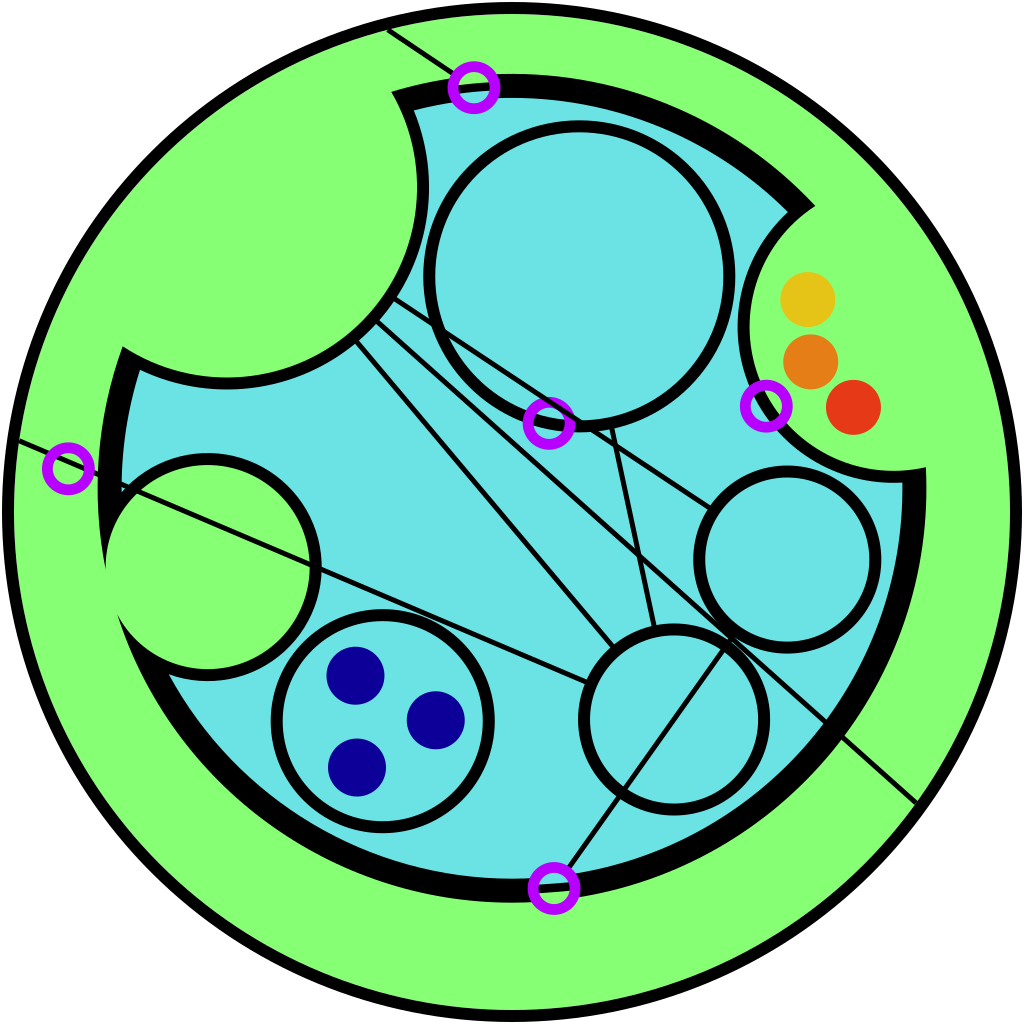This is a question I see from time to time, and it’s a good question to ask.
Your question as I understand it can be phrased another way as:
The square root of -1 has no defined answer. So we put a mask on it and pretend that’s the answer. We do math with the masked number and suddenly everything is fine now. Why can’t we do the same thing to division by zero?
The difference is that, if you try to put a funny mask on the square root of -1 and treat it like a number, nothing breaks, but if you try the same thing with a division by zero, all sorts of things break.
If you define i = √-1, that is the only thing i can ever be. That specific quantity. You can factor it out of stuff, raise it to that exponent, whatever. And if it is ever convenient to do so, you can always unmask it back into that thing, e.g. i^2 = (√-1)^2 = -1. All the while, all the already existing rules of math stay true.
A division by zero isn’t like this, because if you tried it, every number divided by zero would equal to the same thing. If we give it a name, say, 1 / 0 = z, then it would also be true that 2 / 0 = z. We could then solve both sides for zero:
1 / z = 0
2 / z = 0
then set them equal:
1 / z = 2 / z
then multiply both sides by z:
1 = 2
which is a contradiction.
i doesn’t have this problem.
I’m curious, couldn’t we define z as only 1/0? Then 2/0 would have to be factored to 2*(1/0) first and it would solve this specific example of things breaking. I haven’t done advanced math in a while but your comment picked my curiosity haha
I remember 1/0 is pretty important in limits and stuff, it just seemed to me that this specific example seems not too hard to resolve
I’m fuzzy on the deeper details. I think you can do something like this, but you have to be very careful, in ways where you don’t have to be so careful with ✓-1.
One of the more obvious ways to consider: plot a graph of y = 1 / x. Note how as x approaches zero from the right, the graph shoots up, asymptotically approaching the y-axis and shooting up to infinity. It’s very tempting to say that 1 / 0 is “infinity”. “Infinity” is not a real number, but nothing is stopping you from defining a new kind of number to represent this singularity if you want to. But at that point you have left the real numbers. Which is fine, right? Complex numbers aren’t real numbers either, after all…
But look at the left side of the graph. You have the same behavior, but the graph shoots down, not up. It suggests that the limit of approaching from the left is “negative infinity”. Quite literally the furthest possible imaginable thing from the “infinity” we had to define for the right side. But this is supposed to be the same value, at x = 0. Just by approaching it from different directions, we don’t just get two different answers, we get perhaps the most different answers possible.
I think it’s not hard to intuit a handwavey answer that this simply represents the curve of y = 1 / x “wrapping around through infinity” or some notion like that. Sure, perhaps that is what’s going on. But dancing around a singularity like that mathematically isn’t simple. The very nature of mathematical singularities is to give you nonsensical results. Generally, having them at all tends to be a sign that you have the wrong model for something.
You can mostly avoid this problem by snipping off the entire left half of the x-axis. Shrink your input domain to only non-negative numbers. Then, I believe, you can just slap “infinity” on it and run with it and be mostly fine. But that’s a condition you have to be upfront about. This becomes a special case solution, not a generalized one.
I haven’t looked into it, but I believe this singularity gets even more unweildy if you try to extend it to complex numbers. All the while, complex numbers “just work”. You don’t need doctor’s gloves to handle them. √-1 isn’t a mathematical singularity, it’s a thing with an answer, the answer just isn’t a real number.
Awesome, thank you for taking the time to explore it more, that makes sense to me
Seriously u/pixelscript that’s a really good explanation and I hope it’s right. My understanding of infinities is pretty limited but I’d like to subscribe to your newsletter.
This is the first time I’ve seen this spelled out and it makes perfect sense.
Oh man, I knew I had asked this question in the right place.
Thank you!With imaginary numbers, I visualize something like a needle popping up and moving through cartesian space in new directions or dimensions in all sorts of unexpected and intricate ways, and eventually they find utterly extraordinary and elegant things like the Mandelbrot set. So I wondered if there are other “hacks” or “cheats” that open up new types of progressions and behaviors for study.
Someone else in the thread also mentioned Dirac doing something along the lines of (a)(0) ≠ 0 to handle some of the infinities that pop up in physics.
One of the defining properties of 0 is that anything multiplied by it results in 0.
So in your operation, without being given the actual result, I’d say no, the question is ill-defined.
Then maybe there could be a different kind of zero that works normally with normal numbers, but when multiplied by some bizarre number gives a non-zero answer. Maybe after a few centuries we’ll be using bizarre numbers for computing weird stuff we can’t even imagine yet.
At the moment, that’s a solution looking for a problem, but give is time.
That sounds like you are describing a function.
You can have a function where inputting 0 gives a 0 output except certain conditions where an input of 0 gives non zero output. For example y=sin(x) gives 0 every time x=2π. Otherwise it ouputs a non zero number.
The unit imaginary number, i, equals the square root of minus 1. Imaginary Numbers are not “imaginary”, they really exist and have many uses.
There’s a think called Dirac Delta, which, simplified, has the property that δ • 0 = 1. It’s used in physics to deal with singularities (where values would be ∞) in a meaningful way.
Zero multiplied by zero zero times is by definition one.
Interestingly 00 doesn’t always mean 1, sometimes it’s treated as undefined - depends on what type of mathematical problem you’re working on.
You get this property in algrabraic structures called “wheels”. The simplest to understand wheel is probably the wheel of fractions, which is a slightly different way of defining fractions that allows division by 0.
The effect of this is to create 2 additional numbers: ∞ = z/0 for z != 0, ⊥, and ⊥ = 0/0.
Just add infinity gives you the real projective line (or Riemen Sphere if you are working with comples numbers). In this structure, 0 * ∞ is undefined, so is not quite what you want
⊥ (bottom) in a wheel can be thought as filling in for all remaining undefined results. In particular, any operation involving ⊥ results in ⊥. This includes the identity: 0 * ⊥ = ⊥.
As far as useful applications go, there are not many. The only time I’ve ever seen wheels come up when getting my math degree was just a mistake in defining fractions.
In computer science however, you do see something along these lines. The most common example is floating point numbers. These numbers often include ∞, -∞ and NaN, where NaN is essentially just ⊥. In particular, 0 * NaN = NaN, also 0 * ∞ = ⊥. The main benefit here is that arithmetic operations are always defined.
I’ve also seen an arbitrary precision fraction library that actually implemented something similar to the wheel of fractions described above (albeit with a distinction between positive and negative infinity). This would also give you 0 * ∞ = ⊥ and 0 * ⊥ = ⊥. Again, by adding ⊥ as a proper value, you could simplify the handling of some computations that might fail.
This depends on what properties you want your number system to satisfy. Usually you want for any three numbers a,b,c to satisfy
-
Associativity of addition: a+(b+c)=(a+b)+c This is quite useful, so we don’t want to give this up
-
Commutativity of addition: a+b=b+a Also useful but you could get around that if you really want to, but for our purposes let’s keep it
-
An additive identity (or zero): 0+a=a=a+0 You want a zero, so this is needed
-
Additive inverses: There exists x such that a+x=0 (here x=-a); you also want this
-
Associativity of multiplication: a*(bc)=(ab)*c Same as above, you want this property
-
Commutativity of multiplication: Useful but not necessary
-
A multiplicative identity (or one): 1a=a=a1 Usually with 1=/=0, also useful
-
Multplicative inverses for nonzero elements: Not that necessary, there are useful number systems without this (like the integers …,-1,0,1,…)
-
Distributivity: a(b+c)=ab+ac, (a+b)c=ac+bc You ant this, as it links addition and multiplication and this is quite desirable.
If you assume 4. and 9., you get 0a = (0+0)a=0a+0a, hence 0=0a. This means that you would have to give up distributivity wihin your number system, however distributivity is what links addition and multiplication together, hence your question would just be “what if we have two binary operations that don’t really interact with each other?” and the answer is: Maybe there are useful cases?
Edit: I forgot about losing property 4, in which case some examples are found in the following math stackexchange post
-
Imagine that you have zero cookies and you split them evenly among zero friends. How many cookies does each person get? See? It doesn’t make sense. And Cookie Monster is sad that there are no cookies, and you are sad that you have no friends.
I feel attacked.
Any answer here actually makes sense. You could say you’re giving each of your 0 friends 1 cookie, or 27 cookies, or -8 cookies - and it all works out because you end up giving away 0*1, or 0*27, or 0*-8 cookies in each case, or just 0 - the exact amount you have. It works out because 0/0 isn’t undefined, it’s indeterminate. Splitting any nonzero number of cookies amongst 0 friends would truly have no answer, though, since n/0 is undefined for n ≠ 0. Of course that assumes you aren’t having any of the cookies yourself.
“Imaginary numbers” aren’t actually imaginary. They got that name back when people didn’t realize they actually exist. The reality is that they are actual numbers and do actual numbers things.
Division by 0 is mathematically undefined. There is no definable number that you can use to do number things expressed by 1/0.
the following image is the Mathematical Abstract for the book Quantum Theoretic Machines by August Stern

i honestly have no idea what any of it means, but i read the book (it’s fascinating) and remembered that the square root of zero is defined in his theory.
interesting, no?
To be completely honest, this looks like what I like to refer to as “symbol vomit”. And also, the square root of 0 is just 0, that is the definition you will find almost everywhere, so there is no need for this weird symbol salad. As for the author, I couldn’t find him apart from like two of his books, do you have any more infos on him? Because this looks very non-mathematical apart from the symols.
Imaginary is an incorrect term. There’s nothing imaginary about i, it’s a logical mathematical construct. I hate that imaginary is used in this context.
One of the biggest misconceptions of imaginary numbers is that “i = √-1” Well… it does equal that, but the bigger truth is that “i^2 = -1”. We don’t care what the actual value of i is, we’re imagining a number who’s square is -1 and all the awesome math that comes from that is the complex numbers.
While introducing a new number that would yield a nonzero result when multiplied by zero would break the logic of arithmetic and algebra, leading to irresolvable contradictions, we do have something kind of similar.
You’re probably familiar with certain things, like 1/0, being undefined: They don’t have any sensible answer, and trying to give them an answer leads to the same sort of irresolvable logical contradictions as making something times zero be nonzero.
There’s a related concept you might also be familiar with, called indeterminate forms. While something like 1/0 is undefined, 0/0 is an example of an indeterminate form - and they’re special because you can sensibly say they equal anything you want.
Let’s say 0/0 = x. If we multiply both sides of that equation by 0, we get 0 = 0 * x. The right side will equal 0 no matter what x is - and so the equation simplifies to 0 = 0. So our choice of x didn’t matter: No matter what value we say 0/0 equals, the logic works out.
This isn’t just a curiosity - pretty much all of calculus works on the principle of resolving situations that give indeterminate forms into sensible results. The expression in the definition of a derivative will always yield 0/0, for example - but we use algebraic and other tricks to work actual sensible answers out of them.
0/0 isn’t the only indeterminate form, though - there are a few. 0^0 is one. So are 1^∞ and ∞ - ∞ and ∞⁰ and ∞/∞ and, most important to your question, 0*∞. 0 times infinity isn’t 0 - it’s indeterminate, and can generally be made to equal whatever value you want depending on the context. The expression that defines integrals works out to 0*infinity, in a sense, in the same way the definition for derivatives gives 0/0.
This doesn’t break the rules or logic of arithmetic or algebra because infinity isn’t an actual number - it’s just a concept. Any time you see infinity being used, what you really have is a limit where some value is increasing without bound - but I thought it was close enough to what you asked to be worth mentioning.
There can be no such actual number that gives a nonzero number that works with the standard axioms and definitions of arithmetic and algebra that we all know and love - they would necessarily break very basic things like the distributive property. You can define other logically consistent systems where you get results like that, though. Wheel algebra is one such example - note that the ‘Algebra of wheels’ section specifically mentions 0*x ≠ 0 in the general case.
Such a number leads to mathematical paradox, it’s beyond useless.







